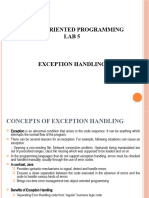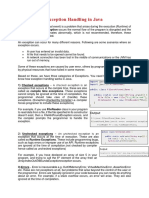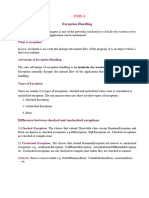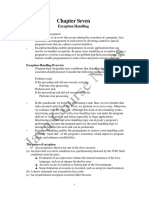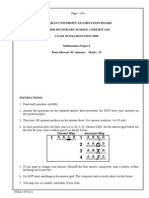0% found this document useful (0 votes)
2 views44 pagesTopic 12 - Exception Handling and Threading in Java
The document provides an overview of exception handling and threading in Java, explaining the concept of exceptions, their types, and the importance of handling them for program stability. It also covers the creation and management of threads, including synchronization and inter-thread communication. Key Java keywords related to exception handling, such as 'throw', 'throws', and 'finally', are discussed along with examples to illustrate their usage.
Uploaded by
kusaltharindu739Copyright
© © All Rights Reserved
We take content rights seriously. If you suspect this is your content, claim it here.
Available Formats
Download as PDF, TXT or read online on Scribd
0% found this document useful (0 votes)
2 views44 pagesTopic 12 - Exception Handling and Threading in Java
The document provides an overview of exception handling and threading in Java, explaining the concept of exceptions, their types, and the importance of handling them for program stability. It also covers the creation and management of threads, including synchronization and inter-thread communication. Key Java keywords related to exception handling, such as 'throw', 'throws', and 'finally', are discussed along with examples to illustrate their usage.
Uploaded by
kusaltharindu739Copyright
© © All Rights Reserved
We take content rights seriously. If you suspect this is your content, claim it here.
Available Formats
Download as PDF, TXT or read online on Scribd
/ 44




















